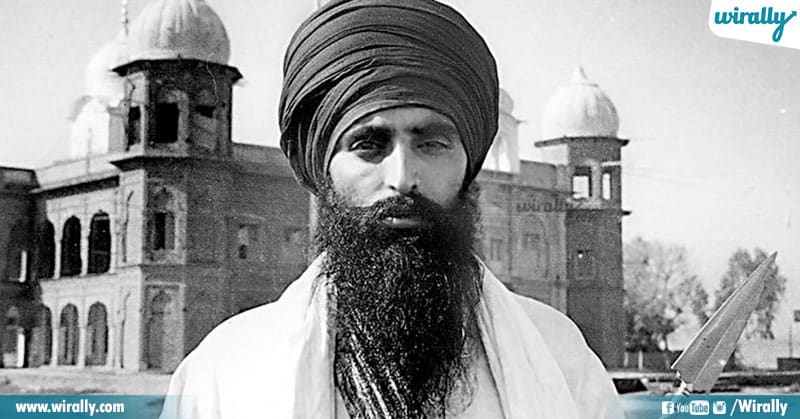Operation Blue Star was the codename of an Indian military action which was then ordered by the then Prime Minister Indira Gandhi, to remove militant Sikh leader Sant Jarnail Singh Bhindranwale and his followers from the buildings of the Harmandir Sahib (Golden Temple) complex in Amritsar, Punjab. Carried out between June 1 and June 8, 1984, in Amritsar.It was the biggest internal security mission ever undertaken by the Indian Army. The operation took birth after the rise of Khalistan movement in India. Bhindranwale, who had a huge influence on Sikh youth, persuaded many people to follow Sikh rules, and he and his supporters took over the Akal Takht complex in Amritsar’s Golden Temple. In this article, we will be taking a look at some of the unknown facts you might have not known about this operation.
Unknown Facts About Operation Blue Star
- Jarnail Singh Bhindranwale was a strong supporter of an independent-Punjab and also a highly influential person among the Sikh youth. The primary aim of the Operation was to remove Bhindranwale and his supporters who had occupied the Akal Takht complex and the Golden Temple in Punjab’s Amritsar.

- The operation was divided into two parts, with the first one was called Operation Metal, which was restricted to eliminating armed militants from the Golden Temple. And Operation Woodrose which was carried out by Indian Army, using tanks, artillery, helicopters and armored vehicles.
- The government faced a lot of backlash in 1984 as they had barred media from entering Punjab altogether. Media personnel were put on a bus and were dropped off at Haryana border.
- Punjab faced a complete curfew as the army and para-military were patrolling around. Harmindar Sahib’s entries and exists were completely sealed.
- Army used tanks to destroy the Akal Takhat.
- Indira Gandhi was assassinated on October 31, 1984, four months after the Operation Blue Star. She was shot dead by two of her Sikh bodyguards, Satwant Singh and Beant Singh. The primary reason for the assassination is the Operation Blue Star, which was ordered by her.
- The entire operation lasted for 10 days, from June 1 to June 10,1984
- One June 1, the Indian Army attacked Guru Ram Das Langar inside the Temple, where around 8-10 people were killed.
- A portion of the Temple, Ramgarhia Bungas, was bombed on June 4, and militants were attacked. The government appointed Gurcharan Singh Tohra, former head of the Shiromani Gurdwara Parbandhak Committee to negotiate with Bindrawale, which failed.
- General AS Vaidya, the 13th Army chief, who supervised the operation was shot dead In Pune after his retirement, by two pro-Khalistani Sikhs, who in turn were hanged till death in 1992.
- Bhindranwale’s tactical adviser was Maj Gen Shahbeg Singh, noted for his service in training of Mukti Bahini volunteers during Bangladesh Liberation War.
- While the fighting started on 5 June 1984 and went on till its culmination on 8 June 1984, another operation, Operation Woodrose, was also initiated throughout Punjab to cleanse the state of Bhindranwale’s supporters or Khalistani militants.
- Of the 6 generals leading the operation, 4 were Sikhs. One of them was Lt. Gen. Kuldeep Singh Brar, who was given the command of the action, & had been a former student of Shabeg Singh at the prestigious Indian Military Academy, Dehradun. They had served together in the Bangladesh operations in 1971 as well.
- There were high civilian casualties in the operation as the militants had used the pilgrims as human shield and had not let them go when the curfew imposed in that area had been lifted for few hours.
- In order to establish a separate Sikh country called Khalistan, new currency was already being printed and distributed for some time prior to the Blue Star.
- The Operation Blue Star was one of the main reasons for the infamous 1984 anti-Sikh riots in the country where more than 3000 Sikhs were killed, most of them in the territory of Delhi and North India.
- Lt. Gen. S.K.Sinha who was the Vice-Chief Of the Indian Army and set to become the Chief was asked to prepare a plan for Operation Blue Star. He advised against this. Controversially, he was replaced by Gen. Arun Vaidya who became the Chief. Gen. Vaidya and Lt. Gen. Sundarji who was the Vice-Chief planned and co-ordinated the operation. 1 lakh Indian Army troops were deployed on May 25th, 1984.
- On June 3, all the phone lines to and from Punjab were cut and the journalists were removed causing a total media blackout. Roadblocks were created so no one could leave Punjab. Approximately 10,000 pilgrims were trapped inside the temple complex. The curfew that was imposed in Punjab turned violent as some milk vendors were shot dead.
- According to Army’s statistics, 500 Sikh militants were killed and 83 military officers were killed. Some sources back then state that the actual figures were much more with civilian casualties amounting to 20,000. And military casualties around 700.
- The main political aim of Jarnail Singh Bhindranwale and his followers was to pass the Anandpur Resolution and appeal for a separate country of Khalistan.
- The Indian government began to rebuild the Akal Takht. Sikhs named it ‘Sarkari Takht’ to indicate it had been built by the government and was not Akal (sacred).
- Later in 1986, Sikhs decided to demolish the Sarkari takht and build a new Akal Takht through the Sikh tradition of self-service and in 1995, a new, larger Takht was completed.
- The Indian Army used seven Vijayanta tanks during Operation Bluestar.
Also Read: Unknown Facts About Egypt